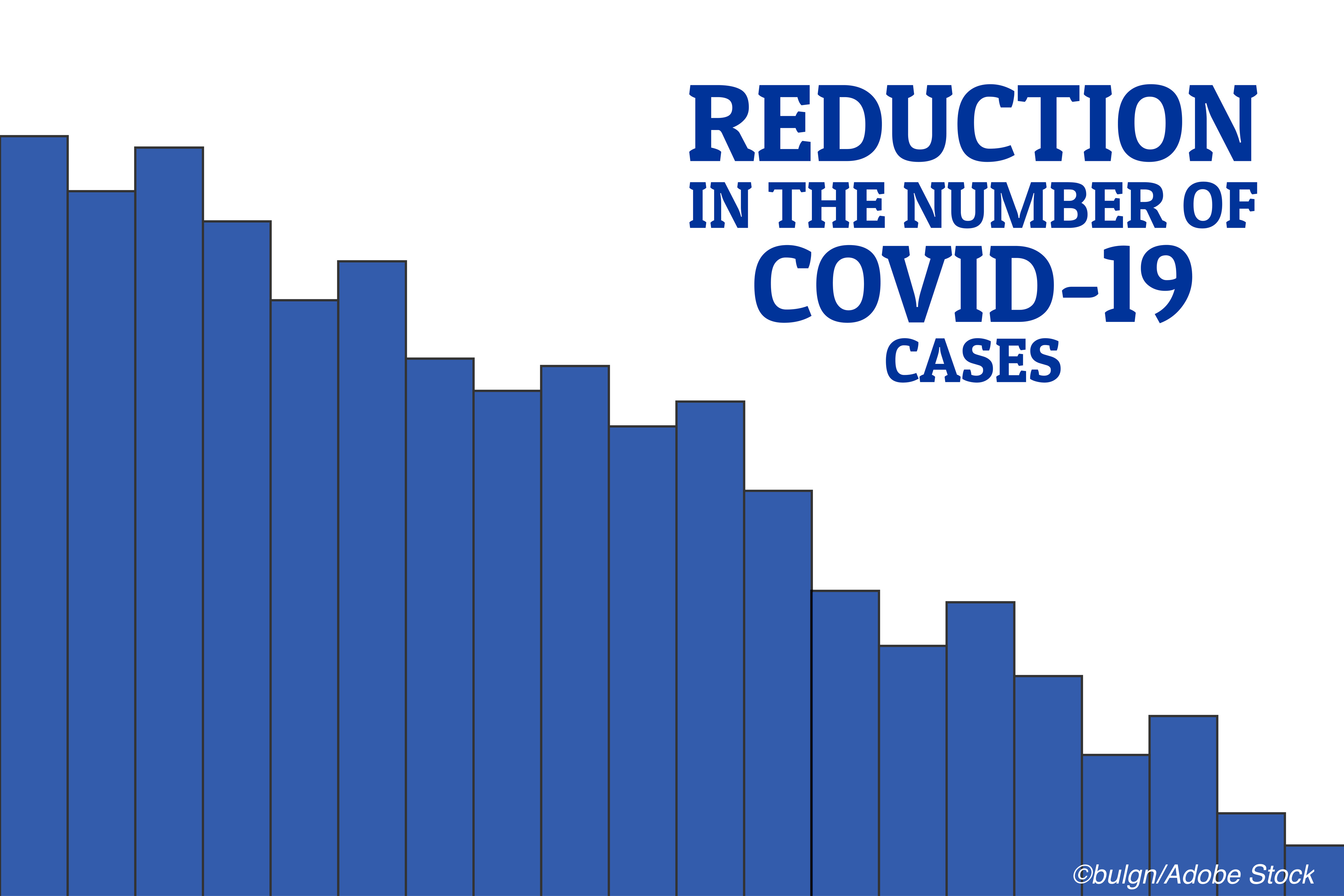Covid-19 cases and deaths in the U.S. could sharply decline in the coming months if the rate of new vaccinations remains high and appropriate infection control measures are not abandoned, the U.S. Centers for Disease Control and Prevention said this week.
In a modeling study published this week by the CDC, researchers projected what Covid-19 is likely to look like through early fall under four scenarios of vaccination coverage and other infection control levels.
Under the most optimistic scenario with continued high vaccination rates and moderate mitigation strategies remaining in place, weekly deaths from Covid-19 are projected to drop to a few hundred or even lower by late summer or early fall.
Discussing the report at the weekly briefing of the White House Covid-19 task force on Wednesday, CDC director Rochelle Walensky, MD, called it “very good news,” noting that most earlier models of Covid-19 offered a grim picture of the future.
“What we learned from this report is that we are not out of the woods yet, but we could be very close,” she said. “All of us are getting fully vaccinated, and continuing our prevention efforts can help us turn the corner on the pandemic as early as July and set us forward on a path toward more normal lifestyles.”
The latest figures from the CDC show a 7-day average of 48,000 Covid-19 cases a day, which is 12% lower than the previous week. Daily hospitalization admission dropped 10% from the previous week, to just over 3,900, and death declined to a new low of 400 per day.
Though the numbers are trending in the right direction, Walensky warned that progress could stall without vigilance.
“The models give us an important reminder,” she said. “They project that local conditions and emerging variants are putting many states at risk for increases in Covid-19 cases, especially if we do not increase the rate of vaccinations and if we do not keep our current mitigation strategies in place until we have a critical mass of people vaccinated.”
The study, which was a collaborative effort by six modeling research teams, represents the first multiple model approach to projecting the trajectory of Covid-19 in the United States in the coming months.
Under all four modeling scenarios, cases of Covid-19 were projected to increase nationally through May, due to the increased prevalence of the B.1.1.7 variant and declines in social distancing and mask mandates.
Under the most optimistic scenario, which assumed high vaccination coverage (between 75% and 90%) and moderate non-pharmaceutical intervention (NPI) adherence, new weekly cases of Covid-19 could drop to below 50,000 by late July and deaths could fall to just a few hundred.
But under the least optimistic scenario, which assumed low vaccination coverage and low NPI use, Covid-19 hospitalizations remained high through the end of summer and into fall.
Covid-19 deaths declined under all four scenarios because most groups at highest risk for death had been vaccinated at the beginning of the projection window.
Modeling differences identified critical areas of uncertainty, including vaccine acceptance, adherence to recommended NPIs, prevalence of the B.1.1.7 variant, duration of immunity and state level NIP policies, noted researcher Justin Lessler, PhD, of Baltimore’s Johns Hopkins Bloomberg School of Public Health, and colleagues.
In an interview with BreakingMED, Lessler said while there are signs vaccination rates are slowing in the U.S., achieving vaccination rates of 75% or even higher among the vaccine-eligible population is certainly attainable.
Close to 60% of eligible adults (±18 years) have had at least one Covid-19 vaccination in the U.S., according to the CDC, and 70% of older adults (±65 years) are fully vaccinated.
“If vaccinations continue at the pace we have seen in the past few months, we should definitely reach that,” he said. “But within the last couple of weeks, we’ve flipped the switch between vaccine being supply limited to being demand limited.”
He said the emergence of Covid-19 variants is not likely to impact the near-term modeling study projections, since the modeling included the increased spread of the more transmissible B.1.1.7 variant.
“Longer term the picture is less clear,” he said. “If we see the evolution of strains of the virus that have escaped immunity from vaccination and previous infections, we could see resurgences.”
Addressing the surge of Covid-19 cases in hot spots like India will be key to preventing that, he said.
“In the U.S., it looks like we may be approaching the end game, but when you look at the global epidemic curve driven by large outbreaks in India and elsewhere, it looks like we are entering the biggest wave of the pandemic,” he said. “We need to be aware that viruses do not respect national borders. A large epidemic anywhere is an opportunity for the virus to evolve and come back everywhere.”
- A modeling study predicted that Covid-19 cases and deaths in the United States could sharply decline in the coming months if the rate of new vaccinations remains high and appropriate infection control measures are not abandoned.
- Under the most optimistic scenario with continued high vaccination rates and moderate mitigation strategies remaining in place, weekly hospitalizations and deaths from Covid-19 are projected to drop to a few hundred or even lower by late summer or early fall.
Salynn Boyles, Contributing Writer, BreakingMED™
The CDC provided funding for the study.
Lessler reported support from DHHS, DHS, California Institute of Technology, NIH; honorarium from the American Associataion for Cancer Research; and personal fees for expert testimony from various sources.
Cat ID: 125
Topic ID: 79,125,730,125,190,31,469,926,192,561,927,151,928,925,934



